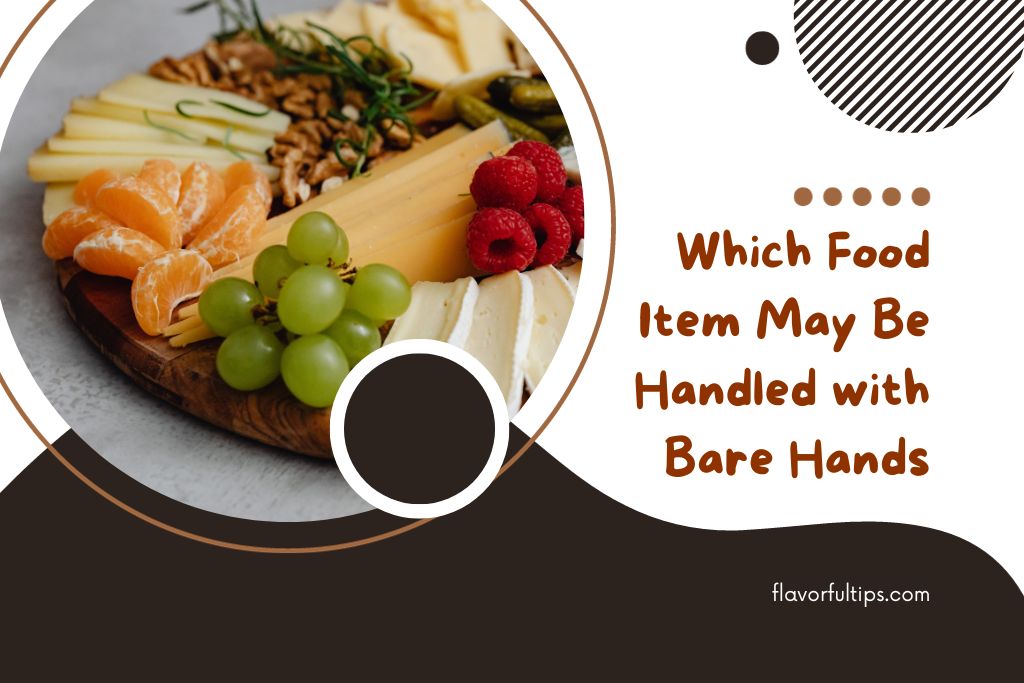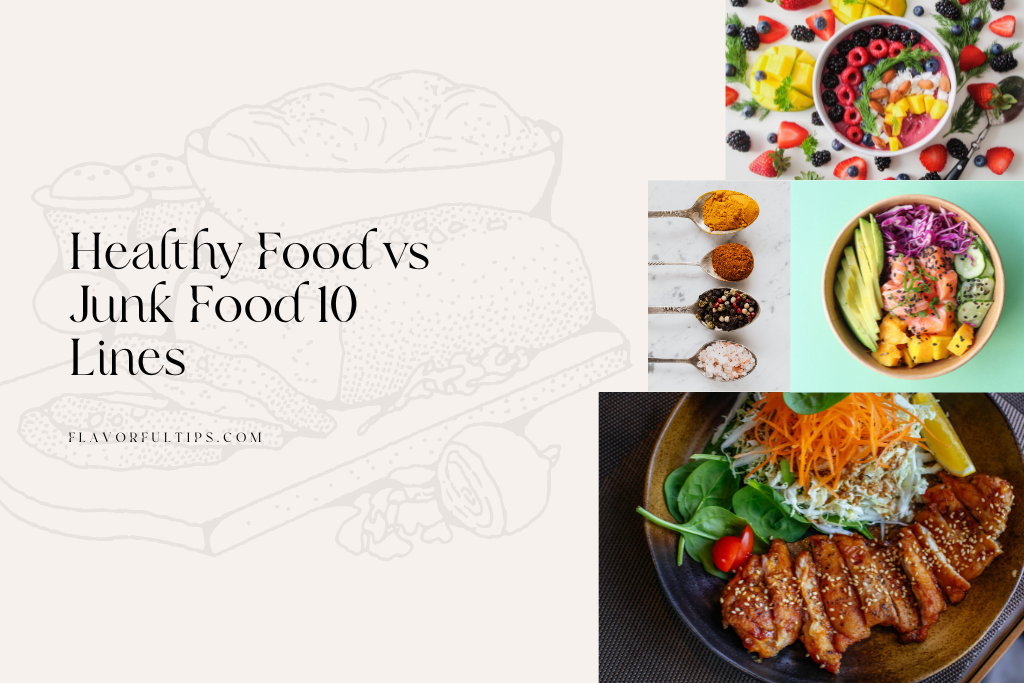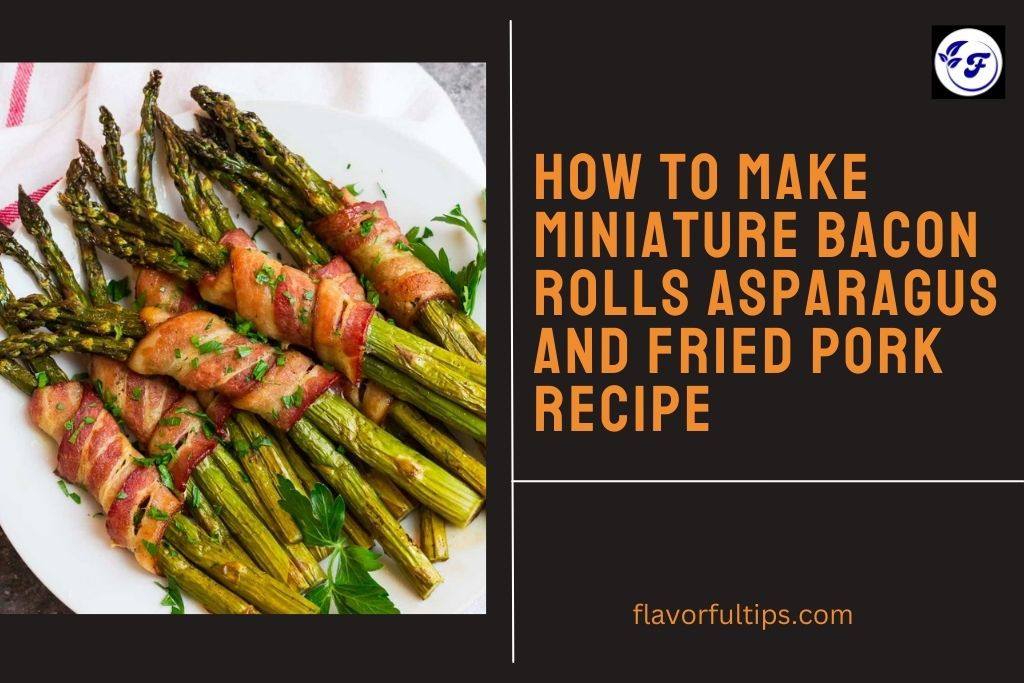Food safety is a paramount concern in every stage of the food industry, from the farm to your plate. Proper food handling is crucial to prevent foodborne illnesses and ensure that the food we consume is safe and free from contaminants. While many aspects of food safety revolve around hygiene, temperature control, and proper cooking techniques, there are specific food items that may be handled with bare hands without compromising safety.
In this comprehensive guide, we’ll explore which food item may be handled with bare hands, the importance of adhering to food safety regulations, situational factors to consider, and best practices for safe food handling. By the end of this article, you’ll have a better understanding of when it’s acceptable to handle food without gloves or utensils and how to do so safely.
Understanding Food Safety Regulations
Before delving into the details of which food item may be handled with bare hands, it’s essential to understand the framework of food safety regulations. These regulations are put in place to protect consumers from foodborne illnesses and ensure the highest standards of safety in the food industry.
Food safety standards vary by country, but they all have common goals: to prevent contamination, ensure proper storage and handling, and maintain the overall quality of food products. Complying with these regulations (or norms) is not only a legal requirement for food establishments but also a moral obligation to safeguard public health.
When it comes to handling food with bare hands, it’s crucial to differentiate between potentially hazardous and non-hazardous foods. Potentially hazardous foods, often referred to as PHF, include items that are more susceptible to bacterial growth and contamination, such as raw meat, poultry, seafood, and dairy products. These foods typically require more stringent handling guidelines and may not be safely handled with bare hands.
On the other hand, non-hazardous foods are less likely to support (help) the growth of harmful bacteria and are generally safe to handle with clean hands when proper hygiene practices are followed.
| Also Read: Shishito Peppers Nutrition Facts: A Tasty and Healthy Delight! |
Which Food Item May Be Handled with Bare Hands?
Fresh Fruits and Vegetables
Fresh produce, like fruits and vegetables, is generally considered safe to handle with bare hands, provided they are washed and cleaned properly. Washing fruits and vegetables under running water helps remove dirt, debris, and surface contaminants. Remember to scrub and rinse thoroughly, especially for items with rough surfaces like potatoes or cucumbers.
Safety Considerations:
- Wash hands thoroughly before handling fresh produce.
- Use clean utensils or cutting boards when cutting or slicing produce.
- Avoid touching the edible parts of fruits and vegetables after handling non-food items, such as trash or raw meat.
Bread and Bakery Products
Bread and baked goods are low-risk foods when it comes to bacterial contamination. As such, they can typically be handled with bare hands without posing a significant food safety risk. However, it’s essential to maintain good hygiene practices, such as clean hands and work surfaces, when dealing with these products.
Handling Guidelines:
- Ensure hands are clean as well as dry before touching bread and bakery items.
- Use clean utensils or gloves when cutting or portioning baked goods.
- Store bread in a clean, dry area to prevent mold growth.
Ready-to-Eat Foods
Ready-to-eat foods, including pre-packaged snacks and meals, are often designed to be consumed without further preparation. These foods are typically considered low-risk for contamination and can be handled with bare hands. However, it’s essential to check expiration dates and packaging integrity to ensure safety.
Safe Handling:
- Wash hands before consuming ready-to-eat foods.
- Check packaging for signs of damage, leaks, or tampering.
- Follow any storage and heating instructions provided on the packaging.
Some Dairy Products
Certain dairy products, for example cheese and yogurt, are less susceptible to bacterial growth due to their low moisture content and high acidity. These products can generally be handled with clean hands. However, it’s essential to retain proper hygiene and avoid cross-contamination.
Dairy Handling Tips:
- Wash hands thoroughly before touching dairy products.
- Use clean utensils when serving or portioning dairy items.
- Store dairy products at the recommended temperature to prevent spoilage.
Situational Factors to Consider
While the above food items can often be handled with bare hands, it’s essential to consider several situational factors to ensure safe food handling practices:
Food Preparation Environment
The food handling environment plays a significant role in determining which food item may be handled with bare hands. Home kitchens and commercial kitchens may have different hygiene standards, so it’s crucial to maintain cleanliness and sanitation regardless of where you’re handling food.
Hygiene Practices:
- Keep work surfaces and utensils clean and sanitized.
- Wear appropriate food-handling attire, such as aprons and hairnets.
- Follow local health regulations and guidelines for food preparation.
Food Allergies and Cross-Contamination
Food allergies are a critical consideration when handling food, especially if you’re dealing with allergenic ingredients. Even when handling non-hazardous foods, it’s essential to prevent cross-contamination by keeping allergenic ingredients separate and using separate utensils and equipment when necessary.
Allergen Management:
- Clearly label allergenic ingredients and keep them segregated.
- Educate staff or family members about allergen handling and cross-contamination risks.
- Implement thorough cleaning and sanitation procedures to prevent allergen transfer.
Local Health Regulations
Depending on your location (and choices), there may be specific health regulations that dictate food handling practices. These regulations can vary widely, so it’s crucial to be aware of and comply with local guidelines, including licensing and permitting requirements.
Compliance Measures:
- Stay informed about local health regulations and updates.
- Obtain any necessary permits or licenses for food handling activities.
- Participate in food safety training and certification programs as required.
Best Practices for Bare-Hand Food Handling
To ensure safe food handling when using bare hands, follow these best practices:
Handwashing and Hygiene
Proper hand hygiene is the foundation of safe food handling. Wash your hands thoroughly with soap and warm water that is for at least 20 seconds before handling food. Make sure to scrub all areas of your hands, including between fingers and under nails. Dry your hands with a clean towel or air dryer.
Glove Usage
While gloves are not always necessary when handling certain foods, they can provide an additional layer of protection in some situations. Use disposable gloves when working with potentially hazardous foods or when handling ready-to-eat foods that require a high level of sanitation.
Glove Guidelines:
- Change gloves when switching tasks or handling different types of food.
- Dispose of gloves after each use, and never reuse disposable gloves.
- Wash hands thoroughly before putting on gloves and after removing them.
Temperature Control
Temperature control is crucial for food safety (while learning about which food item may be handled with bare hands). Keep potentially hazardous foods, such as raw meat and dairy products, at the appropriate temperature to prevent bacterial growth. Use a food thermometer that is to ensure that foods are cooked and stored at the correct temperatures.
Temperature Tips:
- Refrigerate perishable foods promptly to maintain freshness.
- Cook meats to the recommended internal temperatures to kill harmful bacteria.
- Use a food thermometer that help to verify the temperature of cooked foods.
Conclusion
In conclusion, understanding which food item may be handled with bare hands is essential for both consumers and food handlers. While some foods are generally considered safe for bare-hand handling, it’s crucial to maintain strict hygiene practices, adhere to food safety regulations, and consider situational factors to minimize risks.
Remember that food safety is a shared responsibility, whether you’re cooking at home, working in a professional kitchen, or enjoying a meal at a restaurant. By following best practices and staying informed about food safety guidelines, you can play a vital role in preventing foodborne illnesses and ensuring that the food you handle and consume is safe and enjoyable.



